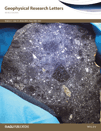 Graduate student Joseph Niehaus is a recipient of the DeVlieg Foundation Graduate Student Fellowship for Engineering students. Niehaus is a PhD student in the interdisciplinary Atmospheric Sciences program at Michigan Tech. His advisor is Will Cantrell.
Graduate student Joseph Niehaus is a recipient of the DeVlieg Foundation Graduate Student Fellowship for Engineering students. Niehaus is a PhD student in the interdisciplinary Atmospheric Sciences program at Michigan Tech. His advisor is Will Cantrell.
The DeVlieg Foundation has generously provided support for graduate students pursuing research in engineering, wildlife, and biology at Michigan Tech. The award is strongly competitive. The panel was impressed with Joseph Niehaus’ research, publication record, and contribution to the mission of Michigan Tech. He will receive support in the form of stipend plus one-credit of tuition for summer 2015.

